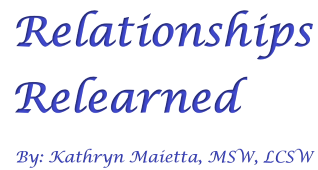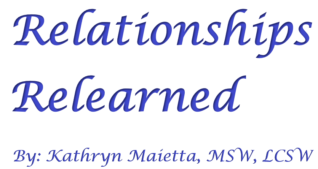Managing Anxiety
There are many methods for managing anxiety. Some people turn to a counselor for talk therapy. Some people turn to their primary care provider for medication management of their symptoms.
Many people don’t even know their symptoms are anxiety! These are people who will “self-medicate” their anxiety with alcohol, drugs, shopping, gambling or hypersexualized behavior. They end up treating the symptoms but not the root cause, anxiety.
Perhaps a more natural way of managing your anxiety is to focus on your five senses: sight, smell, sound, taste and touch. The following are two sensory techniques that may help you manage your anxiety.
Anti-anxiety Technique One: The 333 Rule
The 333 Rule is very simple and can be used anytime, anywhere. This technique focuses on only three of your five senses: sight, sound and touch. Focusing on things that you can see, hear and touch/move gives you a task to focus on rather than allowing your mind to spin.
Step 1: Focus on 3 Things You Can See
Focus on three things you can see, for example, a sleeping kitten, a blooming rose bush, a chair, or even your writing pen. Notice anything and everything about your objects, including the color, size, shape and texture.
Step 2: Focus on 3 Things You Can Hear
Focus on three things you can hear, for example, a purring kitten, road noise, a barking dog off in the distance, a ticking clock, a ceiling fan, etc. Notice if the noise is constant or cycles. Is the noise loud or soft? Soothing or irritating?
Step 3: Focus on 3 Things You Can Touch
Focus on three things you can touch or move, for example, your shirt, a wooden table, paper, the fur of a kitten. Notice if the item is smooth or rough. Soft or hard? Is there a texture to the item? Can you feel the grain of the wood?
This is a great technique for managing your anxiety in the moment. You don’t need to spend any money. All you need to do is look around, listen and touch something. Your only goal is to refocus your mind to the present.
Anti-anxiety Technique Two: Sensory Kit
A Sensory Kit is literally a kit you put together when times are going well to be used during high anxiety times. If you have not taken the time to put together a kit, it will do no good when your anxiety is getting the better of you. By stimulating one of your five senses (sight, smell, sound, taste, touch) during difficult times you can exponentially increase your chances of stopping and reversing a downward emotional spiral.
The items in your sensory kit become self-soothing or irritating objects. Yes, not just things to soothe you, but something that might jolt you! Both self-soothing and irritating items have the potential for distracting your mind away from whatever is causing you anxiety.
The sensory container can be a cardboard or plastic box, bag, tote or any vessel. It only needs to be big enough to hold enough items needed to refocus you. None of the items have to cost a lot of money. They can easily be items you have repurposed from home.
Steps to Making Your Own Sensory Kit
Getting started is always the most difficult part of any task! To develop your own personalized sensory kit, use the following steps:
Step One: Decide on Your Container.
Will your container be big or small? Will it be a bag or box? Determining the size of your container will determine how large your items can be.
Step Two: Compile Your List.
Start by writing down your list of items to include in your kit. Identify one soothing and one irritating item for each of your five senses.
Step Three: Acquire Items for Your Sensory Kit.
Start looking around your home or office for items you already have. If you don’t have everything you need, go shopping! Remember, your items do not need to be expensive! An important point to remember is that the items in your kit cannot be something that requires refrigeration, for example, cheddar cheese or a steak. Also, the items cannot have a short expiration date, for example, a cupcake or a banana.
Step Four: Assemble Your Sensory Kit.
Put all of your items in your container and find a place that is easily accessible. But not so accessible you will be tempted by the Lindt candies “calling out your name”! It will be important to remember, if you use something in your sensory kit, replace it!
Step Five: Use Your Sensory Kit!
Your sensory kit is to be created when things are going well, to be used when things aren’t going so well. It is meant to be used. When life is difficult, look through your kit. Look at each of your items, touch your items, smell them, taste something, listen to an item. It doesn’t matter what order you choose to experience. It is likely a soothing or an irritating item will speak to you. You will feel yourself relaxing. Great job!
Step Six: If You Use Something, Replace It!
This is an important step. If you found something useful, but you used it, make sure you replace it, too! If “it” worked for you once, it is likely to work for you again!
When I was in private practice, I always had a sensory kit in my office. There were two reasons for this, 1) I was able to demonstrate to the clients I worked with what a sensory kit would look like, and 2) life as a therapist can be stressful! A sensory kit was useful for me, too!
Real life example: One day I was showing my sensory kit to a client. I always had a package of peanut butter cups in my sensory kit. To show the client examples in my sensory kit, I first pulled out a box of licorice and said that this was an example of something that was irritating to me. Then I automatically looked for my package of peanut butter cups, my soothing taste, but it wasn’t there! Apparently during a time of stress, I had eaten my peanut butter cups and had failed to replace them! We both had a good laugh! You can guess what I bought on my way home from work!
A Sample Sensory Kit
Below are examples of items for your sensory kit. Keep in mind that your sensory kit is individual to you. No two kits will ever be alike. What is soothing to one person might be irritating to someone else. For example, black licorice. Some people love it and some people hate it! It is YOUR kit.
Sensory Kit
Sight
Soothing: The flame of a burning candle (don’t forget the matches!)
Irritating: A political bumper sticker
Smell
Soothing: Anything with mint, for example, a peppermint patty
Irritating: Moth balls
Sound
Soothing: Recordings of nature sounds (ocean waves, babbling brook, thunderstorm, etc.)
Irritating: Wind chimes
Taste
Soothing: Peanut butter cups
Irritating: Black licorice
Touch
Soothing: Play-Doh or putty
Irritating: Hand sanitizer
Relationships Relearned: Learn. Unlearn. Relearn
To be in a healthy, successful relationship, what you learned in childhood about relationships may need to be unlearned and relearned in a different way as an adult.
Anxiety can be biological in nature; it can be something that you are born with. Or your anxiety can be behavioral, meaning you became anxious based on observing how other people reacted to a situation. An example might be trying something new. If you learned to fear new experiences, you might feel anxious to step out of your comfort zone.
In a relationship, two people bring together their traditions and ways of doing things. What happens if one person loves to be adventurous and try new things in nature, while the other person prefers the comfort of home and its four walls? Both may need to unlearn their routine that their way is the only way to enjoy life.
They will need to learn to collaborate and compromise in order to appreciate another way of doing things. For the person who loves to stay home, they will need to work on their anxiety of being out and about. The person who feels anxiety being in confined spaces will need to find the solitude within four walls. If there isn’t an appreciation of the other’s style, anxiety may destroy the relationship.
Summary
Not every anti-anxiety technique works for every person, not even focusing on your five senses. However, attempting something is better than attempting nothing. When you start to feel anxious and your thoughts start to spiral, focusing on your senses brings you back to the present. Focusing on one or five of your senses helps you to reframe your thoughts and can change your mindset.
What do you have to lose by using these simple techniques?
With warmest regards,
Thank you so much for reading this blog. If you enjoyed the content, please check out other blogs at:
https://relationshipsrelearned.com/my-blog/
https://rvingnomads.com/blog/
You can view my available books on my Amazon Authors Page or go to the books tab at the top of this page
To be notified of future posts, please enter your email address and click on the Subscribe button.









